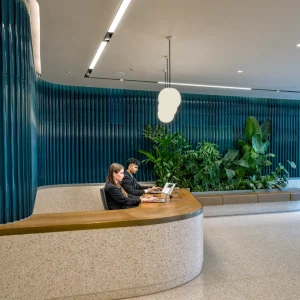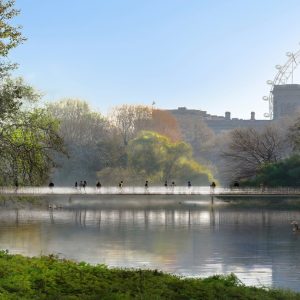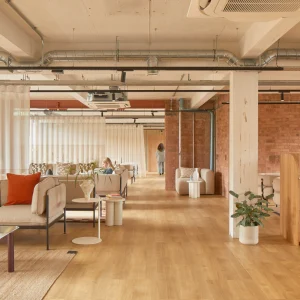Sex and politics… two subjects we’re not supposed to discuss over dinner, but we do anyway, the length and breadth of the country. And then there’s public toilets, or rather the dearth of them. It’s rapidly becoming one of the most talked-about topics of the day. Time was when every town centre had its public conveniences, often an attractive little Victorian building with ornately tiled walls and an attendant in a pink nylon pinny to polish the brass taps and refill the soap dispensers. But few towns these days provide such facilities, and shoppers and visitors to an area are often forced to be inventive or daring in finding somewhere to go when caught short.
Local authorities reneging on their discretionary responsibility to provide WCs cite high running costs, vandalism and antisocial behaviour as reasons why they have closed their amenities. When all the costs of operating a public convenience – cleaning and maintenance, staff, supplies, water and business rates – are taken into account, it can set a council back some 60p for every ‘penny’ spent. Councils are not allowed to charge for providing urinals, so some are being leased to private firms who can charge a fee to use.
According to the British Toilet Association, there is now only one public toilet for every 10,000 people in England. About a third of public toilets in the UK have closed in the past five years; those that remain tend to be neglected, dirty and unsafe.
‘There’s a real crisis underway,’ says Richard Chisnall, director of the British Toilet Association (BTA). ‘It’s affecting people’s quality of life everywhere. Many of our public toilets need to be closed on health and safety grounds. We’ve got serious issues related to public health and MRSA.’
Tourist boards get more complaints about toilets than anything else, he says. And while most people are prepared to pay for clean toilets he believes that the Government should make toilet provision statutory. ‘We’re supposed to be a developed country, yet many high street shops have to wash down their doorways to remove the urine.’ In London, the urine passed by men waiting for night buses in Trafalgar Square is corroding the stone walls of the National Gallery. Women, however, just have to hang on – and that can lead to infections of the urinary tract.
In the provision of safe, clean and convenient public toilets, Europe lags far behind Malaysia, Hong Kong and South Korea. Cambridge City Council is bucking the trend by commissioning Freeland Rees Roberts Architects to design attractive public WCs (see case study right), and Westminster City Council in London is pioneering a number of initiatives, including the text service, SatLav, (see ‘Loo and behold’ on page 112), and extra short-stay parking provision for cab drivers at 32 bays located close to public toilets, pubs and restaurants, with drivers paying 20p for a 12-minute stop.
Westminster spends £3m a year maintaining its 53 council-run and leased toilet facilities across the city, including 12 temporary, outdoor, units in the West End on Friday and Saturday nights. There are now more public toilets in Westminster than at any time in the past 20 years, and the borough has won more awards from the BTA than any other English local authority. But Westminster and Cambridge councils are the exception, not the norm.
What’s the solution to this problem? One is that, when planning consent is granted for a major building scheme and a Section 106 ‘planning obligation’ payment is required to offset the effect of the development on the local community, the local authority may ask the developer to allocate a sum towards the provision of public toilets.
Another is for the person in need to wing it; for example, in most cities of the world you don’t have to look far before spying the golden arches of a certain burger chain, whose branches all have toilets. A little bravado is all that’s required here.
And then there’s the more sophisticated version of this ploy: the Community Toilet Scheme. Pioneered by the south-west London borough of Richmond, the scheme provides businesses such as pubs, restaurants and shops with small grants to open their toilet facilities to the public, who may use the facilities whenever the premises are open and without the need to make a purchase.
In Richmond, the scheme lists among its member’s pubs, hotels, cafes and restaurants, including branches of chains such as Slug & Lettuce and Pizza Express, a wine bar, a Wimpy, two community centres, a health centre, the Teddington Pool and Fitness Gym and the Kew branch of Marks & Spencer.
Other London boroughs following suit include Camden, Lambeth and Waltham Forest and, outside London, Borehamwood, Hertsmere and Sheffield have joined up. In August 2008, London Mayor Boris Johnson called on every London borough to sign up to the scheme, to enable more businesses to participate and make clean, safe and accessible toilets available to the public. Since 1999 London has seen the highest decline in the number of local authority owned and run public toilets in the country.
Of course, if you’re going to make your toilets available to everyone, you have to be sure they are of a quality standard, and the design of loos for public use has moved high up the agenda.
It’s an idea that nightclubs have already latched on to. Far from being a peripheral consideration, the loos are fast becoming a focal point in the design concept of clubs.
Women in particular tend to spend long periods in there, a place for more intimate gossiping and networking. Underestimate the importance of the loos as a key service feature of the venue, and the place may quickly lose customers.
London architecture and design practice Sampson Associates has designed new washrooms for two Essex nightclubs, Escape in Colchester and Mayhem in Southend, that set out to be socialising spaces and fun (see case studies on page xx) with a practice dancing pole in the women’s and interactive plasma screens above the urinals in the men’s.
The women’s washroom includes areas for using hair straighteners and applying make-up and, importantly, somewhere for them to put their drinks so that they don’t have to be left outside at risk of being spiked. For the toilets at Mayhem, Sampson Associates included a one-way spy mirror between the women’s and men’s, along with colour-changing urinals. (See page 108)
‘We’ve been lucky with these clubs as the clients have been happy to go with our ideas to let the WCs be fun and interesting extensions to the main club space,’ says Mike Chandler of Sampson Associates. ‘They’re clean, safe spaces to hang out in but also have a risqué edge to them.’
And, never ones to miss a technological trick, inventors and manufacturers in the Far East are coming up with some quirky washroom accessories. In China, a company called Magic Display China has developed a product called the Magic Advertising Mirror, which displays advertisements when no one is standing in front of it but, reacting to body heat, switches to mirror mode when someone approaches it to wash their hands.
GMP Design has sourced a toilet seat from Taiwan that washes and warms your posterior as you sit on it (with different wash settings for males and females) and even plays music to provide aural camouflage.
This article was first published in FX Magazine.





